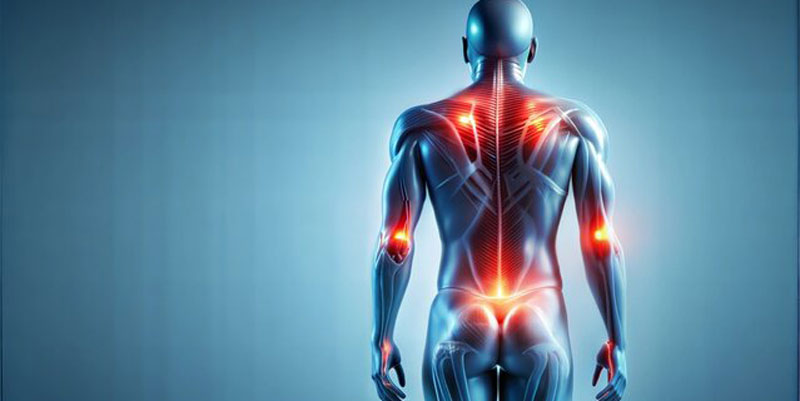
Pain management involves procedures, exercises, medications, and therapy to cope with pain. Pain management specialists may suggest one approach or a combination of approaches to reduce pain. Pain varies from person to person, and the goal of pain management is to improve quality of life and functioning, such as performing daily activities, attending work or school, etc.
Who Benefits from Pain Management?
Anyone suffering from acute or chronic pain can benefit from pain management. Pain can be a symptom of several conditions, such as:
- Burns
- Cancer
- Arthritis, muscle and joint injuries
- Circulatory disorders such as peripheral artery disease
- Chronic pain disorders such as complex regional pain syndrome (CRPS) and central pain syndrome
- Autoimmune conditions like lupus, Crohn's disease and fibromyalgia
- Headaches and migraines
- Endometriosis
- Spine and spinal cord-related conditions or injuries
Pain Management Team
The pain management team comprises of:
- Nurses
- Pain management specialists
- Specialists of other medical conditions, such as neurologists and oncologists
- Anesthesiologists
- Physical and occupational therapists
- Psychologists and psychiatrists
- Complementary or integrative healthcare providers
- Social workers
The pain management team may suggest the following diagnostic tests to evaluate pain:
- Neurological exam
- Physical pain
- Laboratory tests such as blood, urine, and cerebrospinal fluid tests
- Electrodiagnostic studies such as EMG and nerve conduction studies
- Imaging tests such as MRI, CT scans, etc.
The pain management team can ask about the effects of pain on daily activities, mood, relationships, and work.
Different Types of Pain Management
The doctor may suggest a combination of pain management techniques to relieve pain. These techniques can reduce pain or help manage pain as a symptom.
Home Remedies for Pain Management
Pain caused by injuries to muscles and soft tissues can be relieved at home by RICE (rest, ice, compression, and elevation) and heat and cold therapy.
- Rest: After an injury, try to rest for at least 2 days.
- Ice: To reduce swelling, apply an ice pack every 15-20 minutes for 2-3 hours for the first 24-48 hours after the injury.
- Compression: Wrap the affected area with an elastic medical bandage. It should neither be too tight nor too loose.
- Elevation: Raise the sore body part above the level of the heart. This will help reduce swelling, pain, and throbbing. You can use a pillow to raise the injured part above the level of the heart.
Lifestyle changes can help alleviate pain. In the case of obesity, the doctor may suggest maintaining a healthy weight. A healthy weight can be achieved by eating a balanced diet, consuming plenty of water, getting good sleep, and managing stress.
Physical exercises such as walking, swimming, and strength training can help manage pain. These exercises not only correct posture but are also beneficial for mental health.
Physical and Occupational Therapy for Pain Management
Physical therapy is a treatment that helps in improving the way the body performs physical movements. Occupational therapy helps in improving your ability to perform daily activities.
Psychotherapy for Pain Management
Psychotherapy is a combination of treatment techniques that help in identifying and changing unhealthy emotions, thoughts, and behaviors. Since chronic pain can cause depression and anxiety. The doctor may recommend psychotherapy or medications for mental well-being. Cognitive behavioral therapy (CBT) helps in building skills to manage the emotional load of experiencing chronic pain and associated mental disorders. These skills include tackling thoughts and emotions that increase pain, relaxation strategies, and mindfulness techniques.
Complementary Medicine Therapies for Pain Management
Complementary medicine is a set of treatments that are received along with traditional Western medicine. Types of complementary medicine therapies are as follows:
- Acupuncture
- Massage therapy
- hiropractic adjustments or osteopathic manipulative treatment (OMT)
- Meditation
- Biofeedback
- Yoga
- Aromatherapy
- Reflexology
- Dietary supplements and herbal medicines
Medical Procedures and Devices for Pain Management
Medical procedures can help in coping with pain. Specific procedures use electrical stimulation of nerves or soft tissues to cure pain.
- Peripheral nerve stimulation
- Spinal cord stimulation
- Transcutaneous electrical nerve stimulation (TENS)
Procedures and devices for pain management are:
- Steroid injections
- Nerve blocks
- Radiofrequency ablation
- Basivertebral nerve ablation
- Patient-controlled analgesia (PCA) pump or baclofen pump
- Botulinum toxin (Botox) injections
The above approaches fall under interventional pain management. They help people cope with pain through minimally invasive medical procedures that allow them to resume daily activities soon.
Medications for Pain Management
Depending on the type of pain, the provider recommends prescription or over-the-counter (OTC) medications to relieve pain. The medicines are as follows:
- Acetaminophen
- Nonsteroidal anti-inflammatory drugs (NSAIDs) like aspirin and ibuprofen
- Topical analgesics like lidocaine or capsaicin cream
- Antidepressants like tricyclic antidepressants and SNRIs
- Corticosteroids
- Opioids
- Muscle relaxers
- Antiseizure medications such as pregabalin and gabapentin
When to See a Doctor for Pain Management?
Talk to your doctor if you experience:
- Anxious or depressed
- Pain worsens and returns after treatment
- Discomfort and pain keep you from enjoying your usual activities
- Troubled sleep due to pain
If you are experiencing pain, consult a doctor for pain management at Matrix Hospital. The doctor will take a holistic approach to your well-being.
